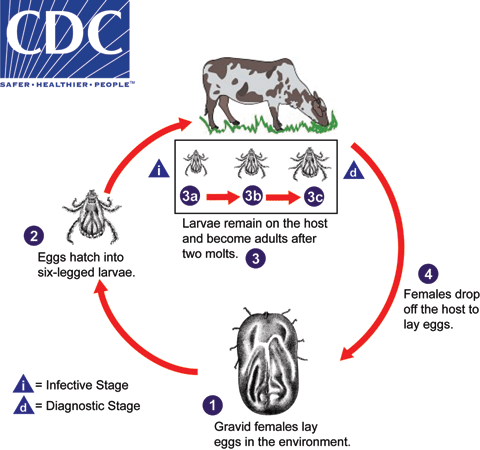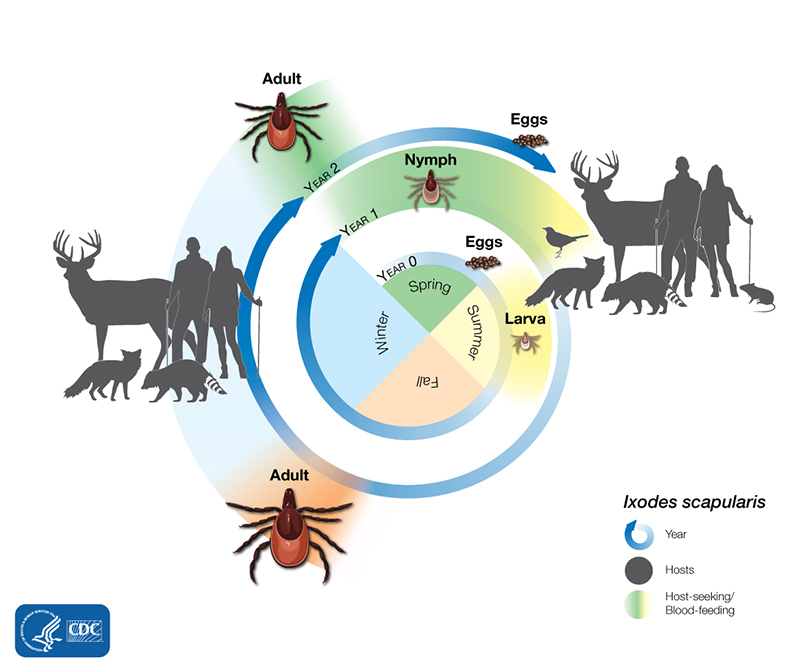tick life cycle time
After feeding the larva drops to the ground to digest its food and begin to grow. The blacklegged tick is considered a three-host tick where each mobile stage larva nymph adult feeds on a different host animal.
Deer Tick Vs Dog Tick Stop Ticks
Egg larva nymph and adult male and female.
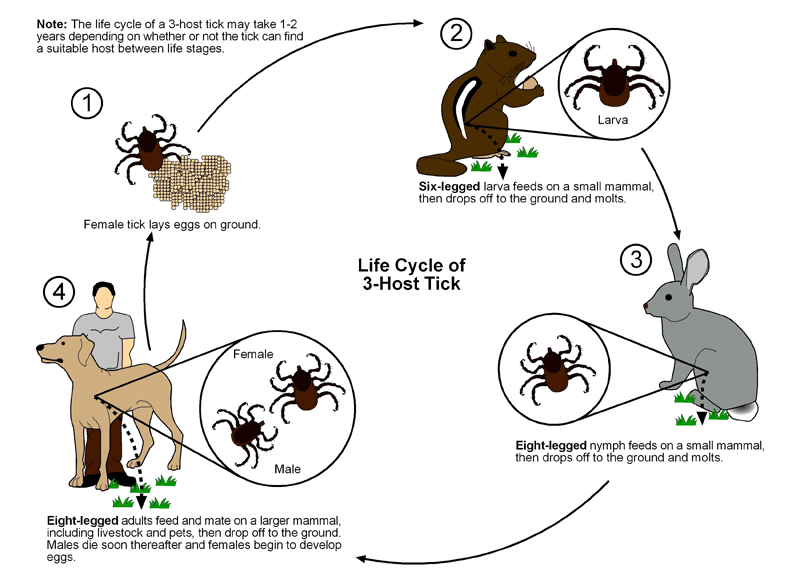
. Afterwards the female lays her eggs and dies. 1 The Egg Stage 1 After the adult female tick has acquired a proper blood meal she mates with the adult male tick leaves the host and searches for a suitable spot to lay her eggs. A tick egg is laid in the spring.
The eggs hatch and six-legged larvae emerge from the eggs. An adult female tick lays her eggs in bunches on the ground several thousand at a time. Ticks will reproduce sexually and typically find mates by feeding on a host.
Adults feed and mate on large animals during the fall or spring. The Life Cycle Of The Deer Tick. Each stage has to find a new host.
The First Stage egg The adult female tick first fulfills a proper blood meal then the process of mating occurs between an adult male and adult female tick. This nymph will then shed its skin one last time and become an adult. Some survive longer but many die when they fail to find a host to feed.
On average this time frame takes about 2 years to complete. THE TICK LIFE SPAN A ticks life span may depend on a number of factors including the type of species. Deer tick eggs hatch into larvae in the late summer months during which time they take one blood meal from a.
The average life length of a. The tick life cycle lasts typically anywhere from 1-3 years. The male tick remains on its host until done feeding when it falls off and dies.
This tick species feeds on a wide variety of mammals as well as birds and. Adult females who have mated will then lay thousands of eggs during the spring before dying soon after as a new generation of ticks begin their life cycle. In order to prevent bites from ticks the diseases they carry and to properly eradicate these pests better understanding of a tick life cycle is helpful.
As ticks go about these stages they need food and blood is their food. This life cycle includes four stages. These parasites have 4 stages of their life cycle.
4 adult mature Females look different from males because they are larger. A larva becomes a nymph in the spring and summer. Each stage requires a blood meal.
Its first host is usually a small mammal or a lizard and it has to find a host in order to grow. Egg Larva Nymph and Adult. How Long Is a Ticks Life Cycle.
One female tick can lay more than a thousand eggs either brown or red in color. Ticks in the larval nymph and adult stages can live for varying lengths of time without a blood mealsome for frighteningly long periods. Ticks undergo different stages of their life cycle.
A tick begins its life as an egg. Once a tick egg hatches it has to feed on blood at every stage of its life cycle for the rest of its life in order to survive. The female tick usually falls off shortly after mating to lay its eggs.
The female tick then leaves the host and. Now let us look at their life cycle to get a better understanding. When the egg hatches a six-legged larva emerges.
Ticks are ectoparasites and consume blood to satisfy all of their nutritional requirements. Its important to be familiar with this life cycle to get rid of ticks from your lawn and landscape and prevent tick bites. The time to completion of the entire life cycle is generally much longer than that of hard ticks lasting over several years.
Aside from its missing set of legs the larva looks a lot like an adult tick. A nymph becomes an adult tick in the fall and winter before laying its own eggs in the spring. The four stages of a ticks life are egg larva nymph and adult.
The Life Cycle of A Tick. The life cycle of a tick is completed after four stages namely egg larva nymph and adult it requires more than a year to complete a full life cycle. Ixodes scapularis commonly known as the blacklegged or deer tick has four life stages.
Usually this happens in the spring and in the summer depending on the temperature and moisture around the egg they hatch into larvae. Almost all ticks are host ticks meaning they live via a host that keeps them alive. They consist of four stages egg larva nymph and adult.
American dog ticks for example a variety of tick that is common in North. They need blood as their energy source in order to grow and. The life cycle of a tick can last upwards of 2 or 3 years.
Hematophagy evolved independently at least six times in arthropods living during the late. Now that we better understand the tick lifespan lets explore more about the interesting life cycle of a tick. The adult tick then finds its hostusually a larger animal or humanmates feeds and transmits the disease.
A ticks life cycle may also impact life span. Stages in the Life Cycle of Ticks. After feeding adult ticks will mate with males typically dying after mating with one or two females.
Life Cycle of Ticks. Additionally many soft ticks have an uncanny resistance to starvation and can survive for many years without a blood meal. The life cycle of a deer tick lasts about two years and begins in the early spring when an adult female engorged full with blood lays fertilized eggs.
After female ticks complete their 2-3 year life span they often lay their batch of eggs in the spring. Many ticks can live as long as three to five months between each stage. Image created by Madison Mayfield.
Ticks that require multiple molts before reaching maturity can take up to three years to reach full adulthood. Ixodes scapularis the black-legged deer tick which is the primary vector for Lyme disease has a four-stage life cycle and a lifespan of about two years. To reach the next stage ticks must feed on a mammal bird reptile or amphibian host commonly referred to as a blood meal.
They are obligate hematophages and require blood to survive and move from one stage of life to anotherTicks can fast for long periods of time but eventually die if unable to find a host. Beginning from egg larva nymph and as an adult. Once a tick has reached maturity its sole purpose is.
A ticks life cycle usually lasts two to three years. In a 3-host tick life cycle each stage engorges on blood from a different host for around 5 to 7 days then drops to the groundthe larvae and nymphs to moult and the adult female ticks to lay their eggs and die. A tick egg hatches into larva in the winter.

Ticks Are A Danger To Pets Petmedic Urgent Care Clinic
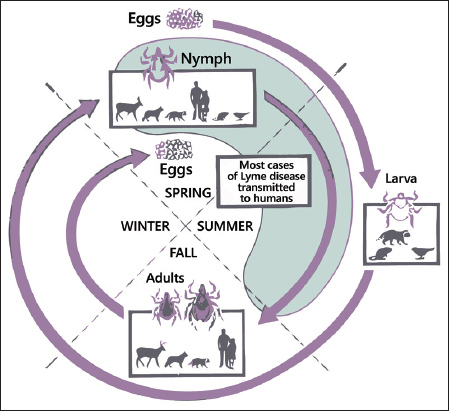
Tickcheck Com Deer Tick Life Cycle And Active Periods Tick Testing Information

File Image Life Cycle Of Ticks Family Ixodidaefr Jpg Wikimedia Commons
The Life Cycle Of The Tick From Eggs To Ambush American Kennel Club

Tick Biology The Tickapp For Texas And The Southern Region

Ticks Public Health And Medical Entomology Purdue Biology Entomology Insects Ticks Diseases Monitoring Control Hot Topics Agriculture Extension

Life Cycle Of The Ixodes Tick Vectors Of Lyme Borreliosis Reservoir Download Scientific Diagram

Life Cycle Of Ixodid Ticks And Natural Transmission Of Rickettsiae Download Scientific Diagram

I Ricinus Life Cycle I Ricinus Is A Three Host Tick Of Which Each Download Scientific Diagram
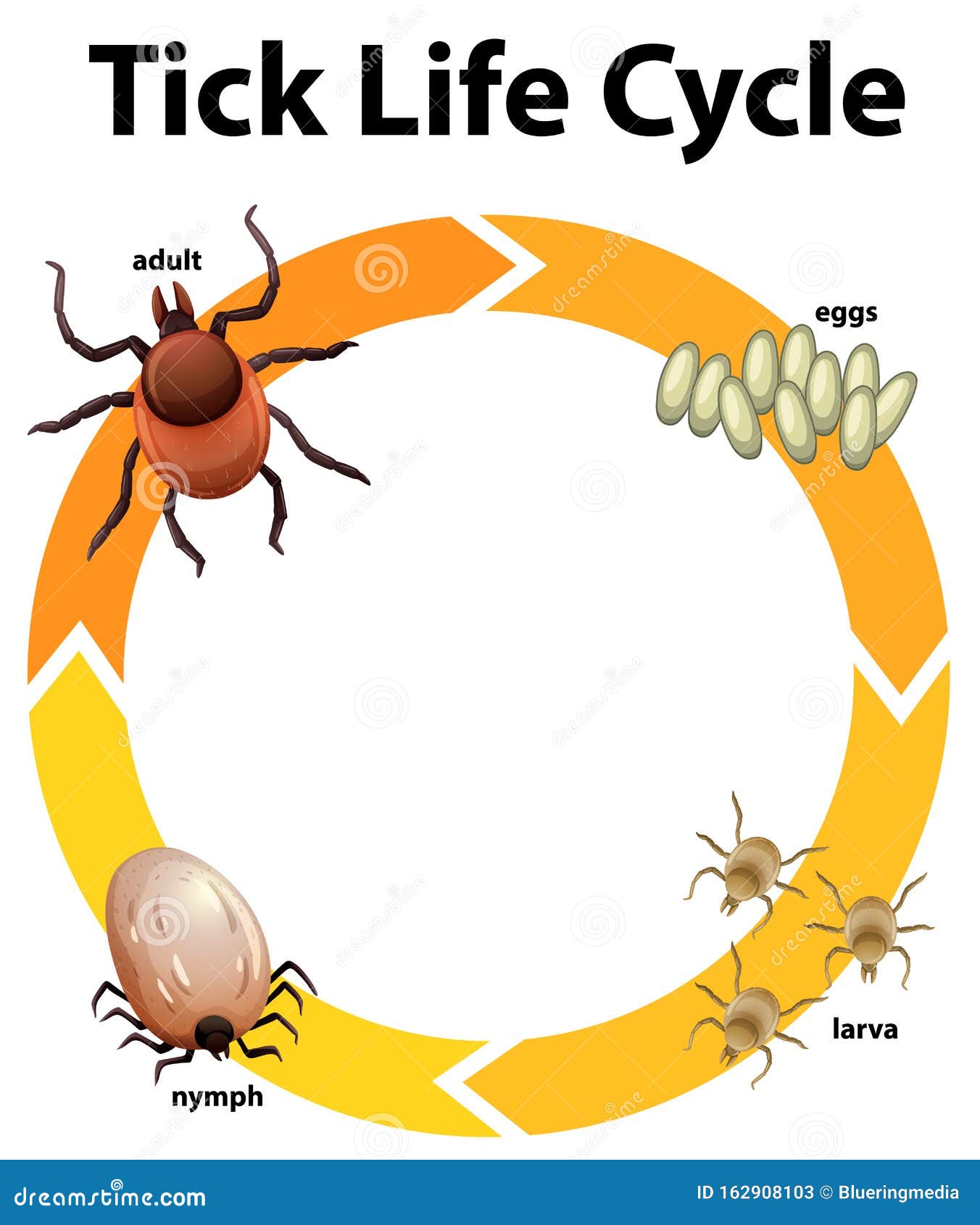
Tick Life Cycle Stock Illustrations 25 Tick Life Cycle Stock Illustrations Vectors Clipart Dreamstime
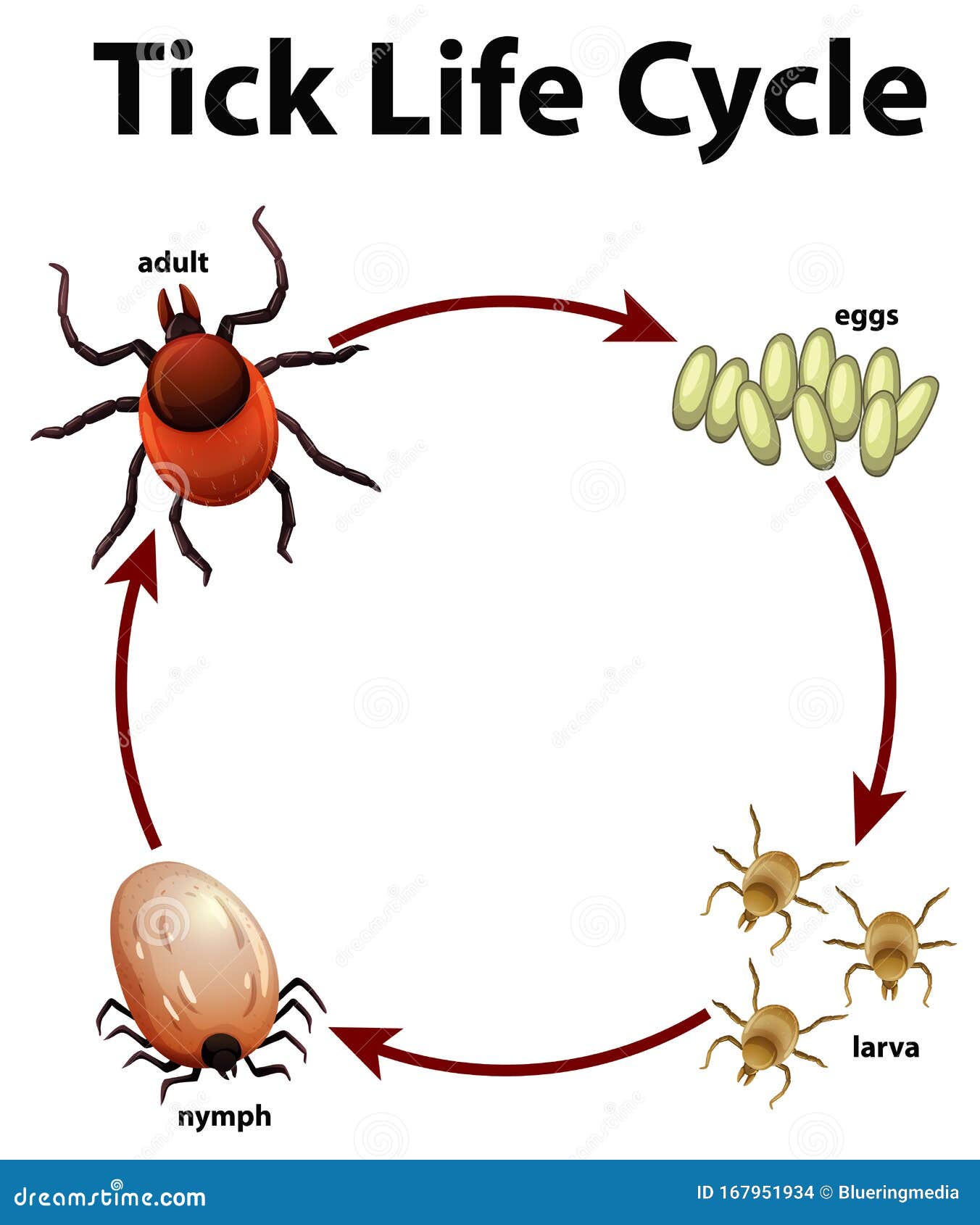
Tick Life Cycle Stock Illustrations 25 Tick Life Cycle Stock Illustrations Vectors Clipart Dreamstime

Ticks Agency Of Agriculture Food And Markets

Hard Tick Life Cycle U S Tennessee Valley Authority Drawing Download Scientific Diagram
Ticks Cdc Southeastern Center Of Excellence In Vector Borne Diseases

Tick Control Guide The Life Cycle Of The Deer Tick

The Tick Lifecycle Lyme Tick Borne Disease Testing Statistics

